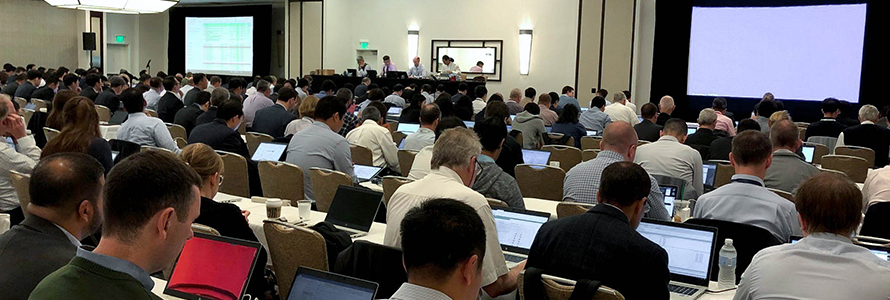This blog report is a repost from IWCE’s Urgent Communications, originally published on July 1, 2019. The original article can be accessed here.
The June quarterly Third Generation Partnership Project (3GPP) meetings in Newport Beach, CA addressed standards in several areas relevant to the evolution of the public safety broadband communications and the Nationwide Public Safety Broadband Network (NPSBN).
The major topic across the 3GPP plenary meetings was planning for 3GPP Release 17 (R17). This release will be built on the work and features already defined in earlier releases. In particular, R17 will build upon R16, which is expected to be frozen by March 2020. The expected freeze date for R17 is June 2021. This is still a preliminary target date that has created significant discussion and should be firmed up by December. There are many diverse interests in 3GPP and the planning for a release involves much discussion and compromises among operators, vendors, and other entities, such as the FirstNet Authority. The following information provides details on each of the plenary meetings.
The Radio Access Network (RAN) Plenary
More than 325 registrants representing vendors, operators and government agencies from around the globe participated in the RAN Plenary meeting.
The second day of the meeting was spent reviewing various member presentations articulating features and functions to be included in R17. The conclusion of this discussion resulted in a set of topics that will undergo moderated email discussions prior to final topics selection and endorsement for the R17 RAN study at the December 2019 Plenary meeting. Of these topic areas, direct-mode communications (D2D) using the 5G radio sidelink is of significant interest to the FirstNet Authority. Some important aspects of the 5G sidelink planning are:
| 5G V2X (Vehicle-to-Everything), Commercial, and Critical Communications use cases. | Relay aspects including UE-to-UE communication for sidelink coverage expansion and UE-to-Network relay for network coverage expansion. |
| Achieve maximum commonality among 5G V2X, Commercial, and Critical Communications usage of sidelink while addressing their specific requirements. 5G is expected to provide 10X the throughput and improved latency over 4G LTE among other improvements. | Focus on common functions across the key use cases. This would avoid parallel treatment of multiple tracks of discussions thus preserving a single focus to facilitate the economies of scale silicon development. The intent is for Public Safety to leverage V2X sidelink as much as possible to address the need for direct mode capability in out-of-coverage scenarios. |
Additional R17 planning topics applicable to the FirstNet network that were discussed and advanced during this meeting included:
| New Radio (NR) V2X sidelink enhancements | NR Multi-SIM (subscriber identity module) support | NR Multicast & Broadcast |
| NR-Positioning enhancements | Non-Terrestrial Networks (NTN) | UE Power saving enhancements |
| enhanced Multiple Input Multiple Output (eMIMO) | enhanced Ultra Reliable Low Latency Communications (eURLLC) | NR-Unlicensed spectrum |
The FirstNet Authority’s Standards team will be participating in the R17 planning discussions over the coming months.
The Core Network and Terminals (CT) Plenary
The CT Plenary meeting included approximately 150 participants. The primary focus was on approval of Release 16 work. The CT work covers the protocol details and follows the architectural work performed in the System and Services Aspects (SA) working groups, which are discussed in the following section.
The major accomplishment for public safety in this CT plenary meeting was the presentation of technical specification (TS) 29.379 "for information." This means that TS 29.379 has reached a significant level of completion with the next step being "approval" at the September 2019 CT plenary. TS 29.379 covers the protocol signaling aspects for mission critical push-to-talk (MCPTT) communication across legacy LMR (land mobile radio) and LTE networks. Other work approved at the CT plenary meeting included features for the 5G core network, including improved definition and usage of OpenAPI application programing interfaces and network slicing improvements.
During the Plenary, an ad hoc meeting of CT working group 1 (CT1) focused only on mission critical services was approved and will take place in July. The FirstNet Authority was the driving force behind organization of this meeting to meet our goals for LMR-MCPTT interworking. The meeting target will be to draft contributions to complete TS 29.380, the media plane specification for MCPTT across LMR and LTE networks.
Items from the CT plenary meeting of interest to the FirstNet Authority include:
- New work item on Mobile Communication System for Railways (MONASTERY) Phase 2. This work builds on the MCPTT work.
- Two new work items on the protocol aspects of V2X.
- Revision of a work item on enhancements to the 5G location services.
- The target end dates for MCPTT and MCData interworking between LMR and LTE were adjusted by three months to reflect delays. Completion is expected by September 2019.
The Service and System Aspects (SA) Plenary
The SA Plenary meeting included 267 participants. A significant amount of time was spent on R17 planning, since the architectural work done in SA working group 2 (SA2) provides the majority of direction for the core network and the devices. SA must cooperate closely with RAN in planning each release, and R17 architectural planning must not only handle the list of features to be included, but must also coordinate tightly with radio feature work in the RAN working groups.
It was decided that the SA chair will create a list of potential R17 features from the inputs to this meeting and provide it to all members. Members will then be able to submit a prioritization of those features to the next SA plenary in September 2019. This input will be used to drive R17 feature selection in SA. Final selection will be coordinated with RAN in the December 2019 plenary meetings.
Items from the SA plenary meeting of interest to the FirstNet Authority include:
- Revision of the study item on "Mission Critical services support over 5G System".
- A new work item on "Mission Critical Services support on IOPS mode of operation" (IOPS – Isolated Operations).
- Revision of the study item on "Architectural enhancements for 5G multicast-broadcast services".
- Revision of the study item on "System enhancement for Proximity based Services in 5GS" (5GS – 5G System).
- Presentation of TR 23.744 v1.0.0 for information: "Study into Location Enhancements for mission critical services" and one-step approval of TS 23.273 "5G System Location Services (LCS)" which reached 85% completion.
- Approval of Study on Enhancement to the 5GC Location Services - Phase 2. This study item will further enhance the 5GC LCS architecture and corresponding network functions and procedures to meet the full set of requirements defined in SA WG1.
- Completion of Study on architecture enhancements for 3GPP support of advanced V2X services (FS_eV2XARC) and progressing the normative technical specifications for V2X services (eV2XARC).
- Approval of the FirstNet Authority-led contributions to add new “MCS priority levels” parameter to the 5G Architecture. This new parameter is crucial for Public Safety since it is needed to trigger relative priority among public safety users with the same Quality of Service values based on their roles.
- Approval of the FirstNet Authority-led contributions to add new User Regrouping procedures to the SA6 MCPTT specification. This completes an effort to add alternative methods for Group and User Regrouping to overcome limitations in the existing standardized methods.
In addition to the above list, a variety of work and study items related to mission critical features and related features have advanced towards completion, including V2X and system migration and interconnection.




















